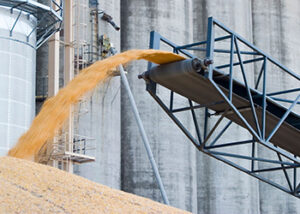
Photo: OSHA
West Lafayette, IN — At least 83 incidents involving confined spaces in the agriculture industry were documented last year – up 41%, according to an annual report recently released by Purdue University.
Of the cases, 29% were fatal (24) – below the historical average of 59%. In 2021, 23 of the 59 documented cases were fatal.
Overall, 41 of last year’s cases involved livestock waste handling facilities, entanglements inside confined spaces, falls from confined space structures, and grain dust explosions or fires.
In addition, 42 of the cases involved grain-related entrapments – a 44.8% spike and the highest total in more a decade. Grain entrapments are the most common type of agricultural confined space incident, a Purdue press release states.
Researchers note that many entrapments involve a person entering a bin or structure to attempt to break up clumped or spoiled grain.
Agriculture workers and employers can use online resources, such as Purdue’s Gearing Up for safety website, to ensure they’re following safe procedures.
“We strongly encourage farmers and agribusiness employers to recognize the hazards presented by confined spaces such as grain bins, silos and manure storage facilities, and use best management practices and effective training programs to keep their families and employees safe,” Edward Sheldon, a research associate at Purdue, said in the release.
The university’s agricultural and biological engineering department has investigated and documented incidents involving grain storage and handling facilities since the 1970s.
McCraren Compliance offers a full range of safety and health training and consulting services. Plus we can help you incorporate well-being into your traditional systems in order to support the Total Worker Health of your workforce.
Call 888-758-4757, email info@mccrarencompliance.com or visit our website www.mccrarencompliance.com
Original article published by Safety+Health an NSC publication


